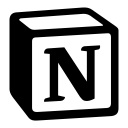Asana vs nTask: Which tool suits your team’s needs best?
- 01Asana vs nTask: overview
- 02What's the difference between Asana and nTask?
- 03Asana pros and cons
- 04nTask pros and cons
- 05Asana compared to nTask
- 06nTask compared to Asana
- 07Features comparison
- 08Asana vs nTask: Which is the best for your business?
- 09Promotions on Collaboration software
- 10Alternatives to Asana & nTask
Access up to $2,400 savings on Asana & $360 on nTask
nTask
25% off all plans for 1 year
Access up to $2,400 savings on Asana & $360 on nTask
nTask
25% off all plans for 1 year
Project management tools are essential for teams looking to streamline their workflows, enhance collaboration, and increase productivity. Leveraging these tools can help automate task management, optimize resource allocation, and gather data to better understand project progress and team performance.
But to maximize your project management efforts, choosing the platform that best suits your business and its needs is essential. In this article, we compare two popular solutions—Asana vs nTask. By understanding their key features, use cases, and main differences, you can determine the best one for your situation. Let’s dive in!
Asana vs nTask: overview
Asana and nTask are two prominent contenders in the world of project management tools, each offering its own unique strengths to cater to specific user requirements.
Asana is known for its robust feature set and flexibility. It provides a comprehensive platform for managing tasks, projects, and workflows, making it an excellent choice for teams of all sizes and industries. In contrast, nTask offers a focused set of features tailored to project and task management. It excels in simplicity and ease of use, providing essential tools for planning, tracking, and collaborating on projects.
Now, let's delve into the Asana vs. nTask comparison to assist you in making an informed decision when choosing the right project management tool for your specific needs.
What's the difference between Asana and nTask?
Asana and nTask offer user-friendly project management tools for organizing tasks, projects, and workflows. Asana caters to teams of all sizes and industries, while nTask’s features specifically cater to small to medium-sized businesses and beginners. There are also some key differences between the platforms that may guide your choice when deciding between the two.
Let’s look at how Asana and nTask approach task management. Asana includes a robust set of features for creating and managing tasks, including subtasks, due dates, and attachments. It also offers advanced project tracking with features like timelines and Gantt charts, making it suitable for complex project management. nTask, on the other hand, provides a more straightforward approach with essential task management features, including task assignment, deadlines, and priorities, which are easier to navigate for smaller teams.
There are also subtle but potentially significant differences between their support options. Both Asana and nTask offer comprehensive online knowledge bases and community forums. Asana provides 24/7 email support and priority support with its premium plans, along with extensive training resources and webinars. nTask includes email support with all its plans and offers dedicated support for its business and enterprise users.
The platforms’ integration capabilities also differ. Asana integrates with a wide range of third-party applications, including Slack, Google Drive, and Microsoft Teams, allowing for seamless collaboration and workflow automation. It also supports custom integrations through its API. nTask, while offering integrations with popular tools like Slack and Zoom, has a more limited range of integrations compared to Asana. This can be a relevant consideration depending on the existing tools your team uses.
In terms of pricing, nTask tends to be more affordable, with a free plan that includes basic project management features and paid plans that are cost-effective for small to medium-sized teams. Asana offers a free plan as well, but its premium features are more expensive, reflecting its broader range of advanced functionalities.
Whether you need the extensive features and integrations of Asana or the simplicity and affordability of nTask, both platforms offer valuable solutions for enhancing team productivity and collaboration.
Asana pros and cons
What are the advantages of Asana?
- Comprehensive feature set: Asana offers a wide range of features including task management, project timelines, Gantt charts, and advanced reporting tools. This makes it suitable for managing complex projects with multiple dependencies and detailed tracking requirements.
- User-friendly interface: The platform is designed with an intuitive interface that makes it easy for users to navigate and manage their tasks and projects. New users can quickly get up to speed with minimal training.
- Robust integrations: Asana integrates with a variety of third-party applications such as Slack, Google Drive, Microsoft Teams, and many more. These integrations help streamline workflows by connecting different tools that teams commonly use.
- Customizable workflows: Users can customize their workflows using Asana’s templates and custom fields, allowing them to tailor the platform to their specific project management needs. This flexibility is beneficial for teams with unique processes.
- Collaboration features: Asana excels in team collaboration with features like task comments, real-time notifications, and file attachments. These features help teams communicate effectively and stay aligned on project progress.
What are the disadvantages of Asana?
- Cost: While Asana offers a free version, many of its advanced features are only available in the premium plans, which can be expensive, especially for smaller teams or startups.
- Learning curve for advanced features: Although the basic interface is user-friendly, some of the more advanced features and functionalities can have a steep learning curve, requiring time and effort to master.
- Limited customization in free plan: The free version of Asana has limited customization options and lacks some advanced features like timelines, Gantt charts, and custom fields, which may be restrictive for larger or more complex projects.
- Dependency management: While Asana does offer dependency tracking, some users find it less intuitive and less powerful compared to other project management tools that specialize in this area.
- Performance issues with large projects: Some users have reported performance issues when managing very large projects with many tasks and subtasks, including slow loading times and occasional lags, which can hinder productivity.
Compare Asana to other tools
nTask pros and cons
What are the advantages of nTask?
- Affordability: nTask offers competitive pricing, making it an attractive option for small to medium-sized teams and startups. Its pricing plans are cost-effective while still providing essential project management features.
- User-friendly interface: nTask is designed with simplicity in mind, offering an intuitive and straightforward interface. This makes it easy for users, especially beginners, to quickly adapt and start managing tasks and projects efficiently.
- Comprehensive task management: nTask provides robust task management features, including task assignment, deadlines, priorities, and status tracking. It also supports recurring tasks and subtasks, which help in detailed task planning and management.
- Meeting management: nTask includes built-in meeting management features, allowing users to schedule meetings, set agendas, and keep track of meeting minutes and decisions. This is particularly useful for teams that need to manage regular meetings as part of their workflow.
- Risk and issue management: nTask offers dedicated modules for risk and issue management, helping teams identify, assess, and mitigate risks. This feature is beneficial for project managers who need to ensure potential problems are managed proactively.
What are the disadvantages of nTask?
- Limited integrations: Compared to other project management tools, nTask has a more limited range of integrations with third-party applications. This can be a drawback for teams that rely heavily on a variety of software tools for their workflows.
- Basic reporting features: While nTask provides essential reporting capabilities, its advanced reporting and analytics features are not as comprehensive as those offered by some other project management tools. This might be limiting for teams that require detailed data analysis.
- Scalability: nTask is well-suited for small to medium-sized teams, but it may not scale as effectively for larger enterprises with complex project management needs. The platform’s features may not be sufficient for managing very large projects with intricate dependencies.
- Customization limitations: Although nTask offers some customization options, they are not as extensive as those available in other project management tools. Teams with unique or highly specific project management processes might find these limitations restrictive.
- Mobile app performance: Some users have reported that the nTask mobile app can be less responsive and slower compared to the desktop version. This can be a disadvantage for teams that need robust mobile access for managing tasks on the go.
Compare nTask to other tools
Asana compared to nTask
Asana and nTask are both popular project management tools, each with unique strengths. Asana is known for its comprehensive feature set, including advanced project tracking, robust integrations, and extensive customization options, making it ideal for large teams and complex projects. Its user-friendly interface and powerful collaboration features enhance productivity.
In contrast, nTask offers a more straightforward and affordable solution, focusing on essential task management, meeting scheduling, and risk management. It is particularly suited for small to medium-sized teams or startups. While Asana provides greater flexibility and scalability, nTask excels in simplicity and cost-effectiveness.
Is Asana better than nTask?
Determining whether Asana is better than nTask depends on your team's specific needs and project requirements. Asana excels with its comprehensive features, advanced project tracking, and robust integrations, making it suitable for large teams handling complex projects. Its extensive customization options and user-friendly interface significantly enhance productivity and collaboration.
Conversely, nTask is more straightforward and cost-effective, focusing on essential task management, meeting scheduling, and risk management. This makes it ideal for small to medium-sized teams or startups. Therefore, if your team requires advanced features and scalability, Asana is the better choice, but for simplicity and affordability, nTask is preferable.
What is Asana best used for?
Asana is best used for managing complex projects and team collaborations, offering a comprehensive suite of features that streamline workflows and enhance productivity. It excels in task management, allowing users to create, assign, and track tasks and subtasks with ease.
Asana's advanced project tracking tools, such as timelines and Gantt charts, are ideal for visualizing project progress and dependencies. Its robust integration capabilities connect seamlessly with other software, making it a versatile hub for various business operations. Additionally, Asana's customizable workflows and real-time collaboration features make it an excellent choice for teams of all sizes across diverse industries.
Can Asana replace nTask?
Asana can replace nTask for many users, particularly those needing a more comprehensive and flexible project management solution. Asana offers advanced features like detailed project tracking, extensive integrations, and customizable workflows, making it suitable for larger teams and more complex projects.
However, nTask's simplicity and cost-effectiveness may be better suited for smaller teams or startups with more straightforward project management needs. While Asana's robust capabilities provide a significant upgrade, the decision to replace nTask with Asana depends on the specific requirements and budget of the team.
Is Asana cheaper than nTask?
Asana is generally not cheaper than nTask. While Asana offers a free plan with basic features, its premium plans, which include advanced functionalities like timelines, custom fields, and advanced reporting, tend to be more expensive.
nTask’s pricing, on the other hand, provides more affordable options, making it a cost-effective solution for small to medium-sized teams or startups. Its paid plans offer essential project management features at a lower cost compared to Asana. Therefore, for budget-conscious teams, nTask is often the more economical choice, while Asana justifies its higher price with a broader range of advanced features.
Is there a better Collaboration software than Asana?
When evaluating project management software, it's crucial to explore whether there might be a better fit for your specific needs.
Some notable alternatives to Asana in the project management space include Trello, Monday.com, Jira, and ClickUp.
The choice of project management software depends on your organization's unique project management objectives, team size, and workflow requirements. While Asana offers a comprehensive suite of features and robust integrations, other tools may provide more specialized capabilities, user-friendly interfaces, or industry-specific solutions that better align with your project management strategy.
6 months free on the Advanced plan on Asana
Get 6 months free on the Advanced plan on Asana and up to $2,400 savings with Secret.
nTask compared to Asana
nTask and Asana are both effective project management tools, but they cater to different needs. nTask is designed for simplicity and affordability, making it ideal for small to medium-sized teams and startups. It offers essential features like task management, meeting scheduling, and risk management.
Asana, however, provides a more comprehensive solution with advanced features such as detailed project tracking, extensive integrations, and customizable workflows. This makes Asana better suited for larger teams and complex projects. While nTask excels in ease of use and cost-effectiveness, Asana offers greater flexibility and scalability for diverse project management requirements.
Is nTask better than Asana?
Whether nTask is better than Asana depends on your team's specific needs and project scope. nTask is ideal for small to medium-sized teams and startups due to its simplicity and affordability. It provides essential features like task management, meeting scheduling, and risk management, which are easy to use and effective for straightforward project management.
However, if your projects require advanced features, detailed tracking, and extensive integrations, Asana would be the superior choice. Asana's flexibility and scalability make it better suited for larger teams handling complex projects. Thus, nTask is better for cost-effective, simple management, while Asana is better for comprehensive, customizable solutions.
What is nTask best used for?
nTask is best used for managing projects and tasks in small to medium-sized teams or startups. It excels in simplicity and affordability, providing essential features such as task assignment, deadlines, meeting scheduling, and risk management. nTask's user-friendly interface makes it easy for teams to plan, track, and collaborate on projects without a steep learning curve.
Its built-in time tracking and issue management tools help ensure that projects stay on schedule and within scope. Overall, nTask is ideal for teams looking for a straightforward, cost-effective solution to enhance their productivity and streamline their project management processes.
Can nTask replace Asana?
nTask can replace Asana for small to medium-sized teams seeking a simpler and more affordable project management solution. While nTask offers essential features like task management, meeting scheduling, and risk management, it may lack some of the advanced functionalities found in Asana, such as detailed project tracking, extensive integrations, and customizable workflows.
For teams with straightforward project management needs and a focus on cost-effectiveness, nTask provides a robust alternative. However, larger teams or those managing complex projects might find Asana's comprehensive feature set more suitable for their requirements.
Is nTask cheaper than Asana?
nTask is generally cheaper than Asana, making it a more budget-friendly option for small to medium-sized teams and startups. nTask offers competitive pricing plans that include essential project management features at a lower cost. While Asana’s pricing structure provides a free plan, its premium features and advanced functionalities come at a higher price point, reflecting its broader range of capabilities.
For teams with limited budgets or simpler project management needs, nTask presents a cost-effective alternative. However, larger teams or those requiring more extensive features might find Asana's higher cost justified by its comprehensive offerings.
Is there a better Task Management software than nTask?
When assessing project management software options, it's crucial to explore whether there might be a better fit for your specific project management needs.
Some notable alternatives to nTask in the project management space include Asana, Todoist, Blue, Nifty, and Teamwork.com.
The choice of project management software depends on your organization's unique project objectives, team size, and workflow requirements. While nTask offers a cost-effective and user-friendly solution, other tools may provide more advanced features, greater scalability, or specialized functionalities tailored to specific industries.
25% off all plans for 1 year on nTask
Get 25% off all plans for 1 year on nTask and up to $360 savings with Secret.
Features comparison
Asana Outshines nTask in Integration Capabilities
Turning towards integration capabilities, Asana again triumphs over nTask. Asana offers a robust API and supports a wider array of integrations with other vital business tools encompassing communication, file sharing, time tracking, and more. For example, Asana users can seamlessly connect with communication apps like Slack for teams, Google Drive and Dropbox for file sharing, Microsoft Teams for collaboration, and Toggl for time tracking. These integrations help streamline workflows and enhance productivity by allowing users to manage everything from a single platform.
On the other hand, while nTask does offer some degree of integrations, such as with Slack and Zoom, it falls short of Asana's extensive list. This can pose limitations in inter-app workflow and might create obstacles in achieving fluid synchronization between various platforms. Hence, businesses needing comprehensive integration capabilities may find Asana a better fit for their diverse software ecosystem.
Both Asana and nTask Offer Superb Reporting Capabilities
Both Asana and nTask excel in delivering comprehensive reports. Asana allows you to visualize your collaborators' workloads and the progress of tasks in a few seconds, helping to spot potential problems and remain proactive throughout the project. For instance, Asana's workload view lets you see who is over or under-assigned, allowing for quick adjustments to maintain balance. Similarly, nTask helps control the project schedule with its integrated time tracking software, providing insights into relevant KPIs and team and project finances. This ensures increased project visibility and helps managers make data-driven decisions.
nTask's reporting capabilities include detailed timesheets and financial summaries, making it easier to track project costs and team efficiency. Both tools, therefore, offer robust reporting features that enhance project management by providing clear, actionable insights into team performance and project health.
Asana Excels in Visual Project Management Over nTask
Asana and nTask both support project management, but when it comes to visual representation of project schedules and dependencies, Asana’s timeline view stands out. Asana's timeline offers a comprehensive, interactive Gantt chart that provides a clear understanding of the entire project at a glance. It highlights potential problems, such as overlapping tasks or missed deadlines, and allows necessary adjustments to ensure the project stays on track. For example, users can easily drag and drop tasks to adjust dates, link dependencies, and visualize project milestones.
Although nTask does provide planning with a Gantt chart, Asana's timeline view offers a more compelling visual cue and a precise, user-friendly overview of the project, making it easier for teams to manage complex projects and stay organized. This makes Asana particularly advantageous for project managers who prioritize clear, real-time visual insights into their project timelines and dependencies.
nTask Simplifies Task Management Better Than Asana
While both tools allow managing tasks, nTask takes the lead in simplifying task management. It accelerates progress by over 300% by enabling you to efficiently list, assign, track, and close collaborators’ tasks in a few clicks. nTask’s intuitive dashboard offers concise time estimates for each task, providing greater precision and clarity, making it easier to manage workloads and deadlines. For example, project managers can quickly allocate resources based on these estimates, ensuring tasks are completed on time.
Though Asana allows task tracking and offers robust features like custom fields and advanced search, nTask’s straightforward approach and clear, time-based task tracking make it exceptionally user-friendly and effective for teams needing quick and precise task management. This makes nTask particularly beneficial for small to medium-sized teams seeking a streamlined, efficient way to manage their daily tasks and projects.
Asana Excels Over nTask in Process Customization
Asana and nTask support process customization, however, Asana's dedicated generator for customizing inter-team work processes outshines nTask. Asana offers extensive customization capabilities that allow teams to tailor workflows to specific needs, whether it's product development, IT requests, or creative development.
For instance, users can create custom templates, set unique task fields, and automate workflows to streamline repetitive processes. This level of customization significantly improves performance and ease in coordinating inter-team work. In comparison, while nTask offers process customization, it lacks the depth and flexibility that Asana provides. Asana's ability to adapt to various team workflows makes it a superior choice for organizations looking to enhance efficiency and collaboration across diverse projects.
nTask Excels Over Asana in Time Tracking Capabilities
Both tools offer time tracking features, but nTask’s dedicated time tracking software provides a more comprehensive solution for managing your team's workload. nTask allows you to monitor your team's time usage in detail, track work hours accurately, and gain complete project visibility, ensuring you stay on track to hit deadlines. For example, nTask’s time tracking feature includes timesheets and detailed reports that help identify productivity trends and optimize resource allocation.
Despite Asana providing automation to make work easier, it lacks the extent of time management features available in nTask. Asana’s time tracking is more limited and typically relies on third-party integrations, making nTask the superior choice for teams needing robust and integrated time management tools.
Asana Leads Over nTask in User Experience and Navigation
When it comes to smooth user experience and easy navigation, Asana clearly takes the lead. Although nTask provides a comprehensive suite of features just like Asana, the latter is renowned for its intuitive interface and ease-of-use. Whether you're managing projects, assigning tasks, or monitoring deadlines, everything can be accomplished with a few clicks on Asana. The user-friendly design makes it suitable for even those who are not technically inclined. For instance, Asana’s drag-and-drop functionality and customizable dashboards allow users to effortlessly organize tasks and visualize project progress.
In comparison, nTask's interface can be somewhat intricate for new users, especially those who are unfamiliar with project management tools. The complexity of nTask may require a steeper learning curve, making Asana the preferable choice for teams seeking an accessible and visually intuitive project management solution.
Subscribe to our newsletters.
No FOMO here. Stay up-to-date on all the latest deals and news with our monthly newsletter straight to your inbox like 126,000+ entrepreneurs (+ Get 10% off on on our Premium Membership!)
Asana vs nTask: Which is the best for your business?
Asana is the best tool for you if:
- You need a highly customizable project management platform that adapts to diverse workflows and team structures across different projects.
- Your team requires seamless integration with various third-party applications like Slack, Google Drive, and Microsoft Teams for enhanced collaboration.
- Visual project tracking tools like timelines and Gantt charts are essential for managing complex project schedules and dependencies.
- You prioritize a user-friendly interface that allows for easy task management, assignment, and progress tracking without a steep learning curve.
- Your organization benefits from advanced reporting and workload visualization features to proactively identify potential issues and optimize resource allocation.
nTask is the best tool for you if:
- You need a cost-effective project management solution that offers essential features without breaking the budget, ideal for small to medium-sized teams.
- Your team benefits from integrated time tracking and detailed timesheets to monitor work hours and manage project timelines effectively.
- Simplicity and ease of use are a priority, making it easy for all team members to quickly adopt and utilize the tool.
- You require built-in meeting management features to schedule, track, and document meetings efficiently, ensuring smooth team collaboration.
- Comprehensive risk and issue management features are essential for proactively identifying and addressing potential project challenges.
Alternatives to Asana & nTask
Promotions on Collaboration software
Start saving on the best SaaS with Secret.
Secret has already helped tens of thousands of startups save millions on the best SaaS like Asana, nTask & many more. Join Secret now to buy software the smart way.

















